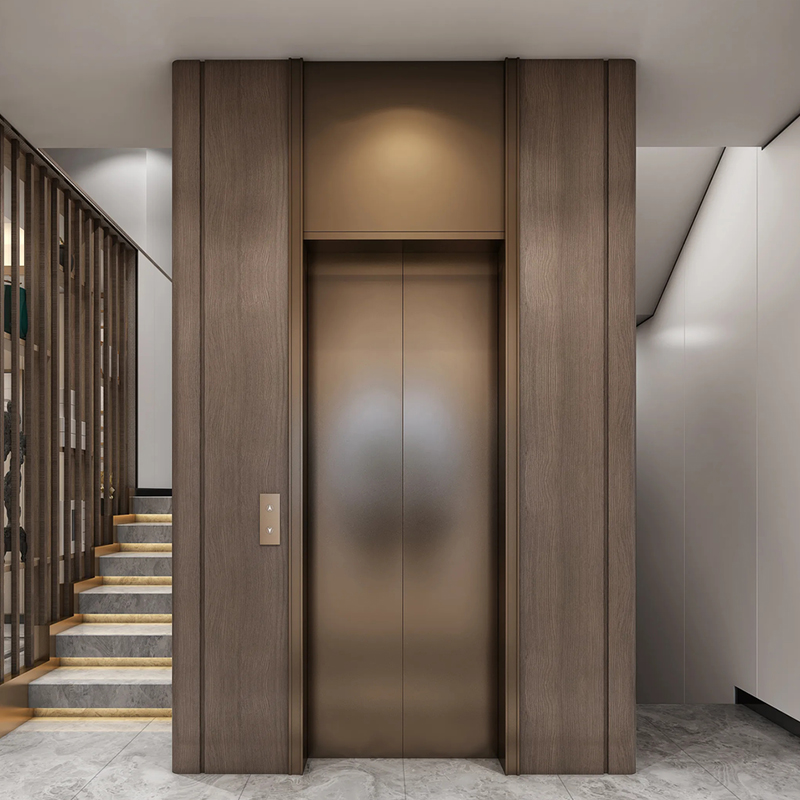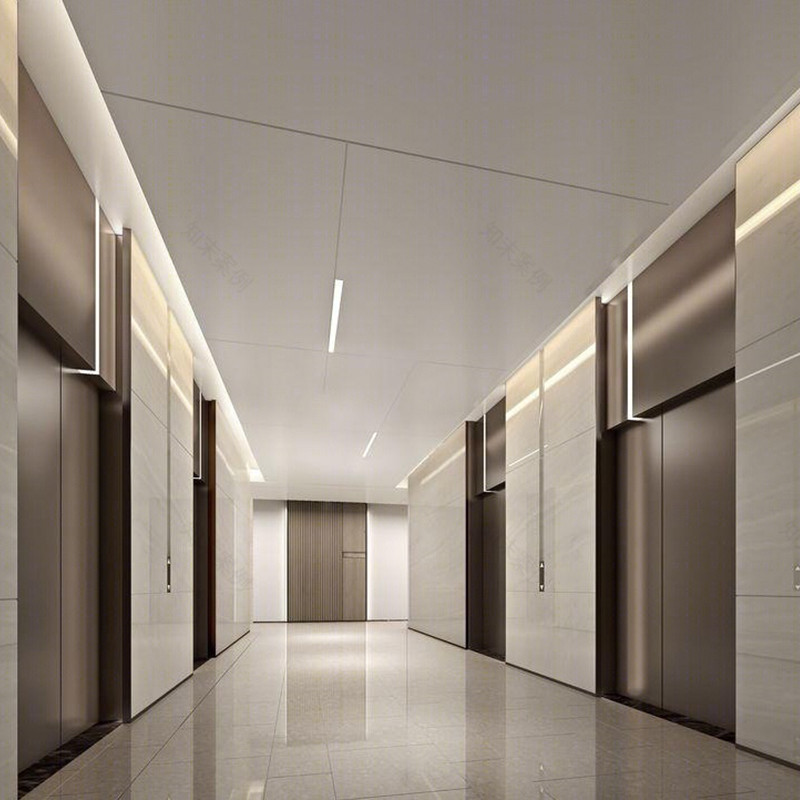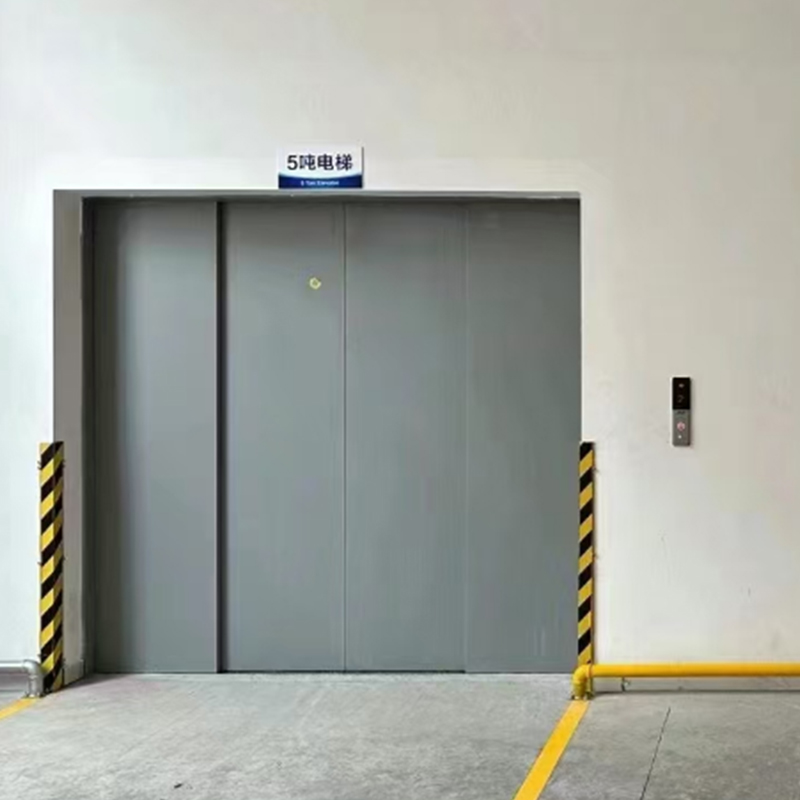
Energy-efficient passenger elevators: the core vertical transportation solution for sustainable buildings
Posted by Admin | 24 Jul
Against the backdrop of accelerated modern urbanization, high-rise buildings are springing up like mushrooms after a rain. As the core equipment for vertical transportation, the energy consumption of elevators is becoming increasingly prominent. Energy-efficient passenger elevators significantly reduce the overall energy consumption of buildings through innovative energy-saving technologies and intelligent management systems while ensuring the comfort and safety of passengers, becoming an indispensable key element in the green building certification system. This type of elevator not only represents the development direction of elevator technology, but is also an important boost for the construction industry to achieve its carbon neutrality goal.
The perfect balance between energy-saving technology and passenger needs
The core value of energy-efficient passenger elevators is reflected in their excellent energy efficiency. By adopting a permanent magnet synchronous gearless drive system, this type of elevator completely changes the energy consumption mode of traditional asynchronous motors, and can reduce energy consumption by more than 30% while maintaining the same carrying capacity. The application of variable frequency vector control technology further optimizes the efficiency of power use, enabling the elevator to automatically adjust power output according to real-time load to avoid energy waste. The most eye-catching thing is the configuration of the electric energy feedback device, which cleverly converts the kinetic energy generated by the elevator during braking into electric energy and feeds it back to the power grid, realizing the recycling of energy. This technology can save up to 25% of electricity consumption in high-frequency elevators.
While pursuing high energy efficiency, this type of elevator has not ignored the fundamental demand of passenger experience. The design of the car strictly follows the principles of ergonomics. From lighting brightness to ventilation efficiency, from button layout to running stability, every detail has been carefully considered. The intelligent passenger flow analysis system can automatically identify the usage mode, increase the capacity during peak hours, and enter the energy-saving state during low hours, achieving a win-win situation of service quality and energy saving. The car space planning is scientific and reasonable, which not only ensures the capacity of people during peak hours, but also avoids unnecessary space waste leading to increased energy consumption, reflecting the modern design concept of "precisely meeting needs".
Comprehensive application of systematic energy-saving technology
The energy-saving advantage of high-efficiency passenger elevators comes from the systematic integration of multiple advanced technologies. The innovation of the drive system is only part of the energy-saving map, and auxiliary energy-saving design also plays an important role. The energy consumption of the high-efficiency LED lighting system is only 20% of that of traditional lighting. With intelligent sensor control, the lights can be automatically dimmed or turned off when no one is using it. The low-resistance guide shoe device significantly reduces the friction loss during elevator operation. This seemingly minor improvement can save a lot of energy over the entire life cycle of the elevator. The lightweight car structure uses high-strength composite materials and optimized design, which reduces the dead weight while ensuring safety, directly reducing the energy demand for each operation.
The intelligent energy consumption management system is the brain center of the energy-efficient elevator. This system can automatically adjust the operation strategy of the elevator according to the actual use of the building. During the morning working hours of the office building, the system will start in advance and allocate more elevators to cope with the peak passenger flow; during the midday trough period, some elevators will be reasonably arranged to enter a dormant state. By learning the flow of people in the building, the system can predictively dispatch elevator resources, which not only avoids long waiting times for passengers, but also minimizes no-load operation. What is more commendable is that the system can monitor the energy consumption status of each elevator in real time, promptly detect and correct any abnormal energy consumption, and ensure that the energy saving effect is sustained and stable.
Strict energy efficiency standards and certification system
The performance evaluation of high-efficiency passenger elevators is based on a scientific international standard system. The ISO 25745 standard provides a global evaluation framework for elevator energy efficiency, dividing elevator energy efficiency into seven levels from A to G, with A representing the highest energy efficiency level. The VDI 4707 standard specifies in detail the measurement methods for elevator energy consumption, including test procedures for key indicators such as standby power consumption and operating power consumption. These standards ensure that elevator products from different manufacturers can be compared in energy efficiency under a fair and unified benchmark, providing an objective basis for selection for building developers and owners.
In terms of specific performance parameters, high-efficiency passenger elevators show significant advantages. Standby power consumption is usually controlled below 50 watts, which is much lower than the standby energy consumption of traditional elevators. The single-run energy consumption benchmark varies according to the elevator specifications and usage scenarios, but is generally 30%-50% lower than conventional elevators. It is worth noting that these energy-saving effects are not achieved at the expense of performance. The operating speed of high-efficiency elevators can fully meet the needs of modern high-rise buildings, generally reaching the range of 1.0-2.5 meters per second, and some high-speed models can even reach more than 4 meters per second. Safety performance is also fully guaranteed, and all energy-saving designs are implemented without reducing safety redundancy.
Multiple application scenarios and significant economic benefits
High-efficiency passenger elevators can play an important role in various building scenarios. In high-rise office buildings pursuing LEED certification, such elevators are often the key factor in obtaining high scores in energy and environmental design. In public transportation hubs such as airports and subway stations, elevators need to operate 24 hours a day, and the energy-saving effect brought by high-efficiency design is particularly significant. Star-rated hotels pay special attention to the balance between energy saving and comfort of such elevators, which not only meets the requirements of high-end customers for elevator experience, but also reduces the energy cost of hotel operations. Public places such as hospitals and shopping centers also benefit from the stable performance and low operating costs of high-efficiency elevators.
From an economic perspective, although the initial investment of high-efficiency passenger elevators is slightly higher, the cost advantage of the entire life cycle is obvious. Through detailed calculation of the payback period, it can be found that the additional initial investment can usually be recovered within 3-5 years due to the significant reduction in electricity bills. Considering the 15-20 year service life of the elevator, the comparison of operating costs over a ten-year period often shows a total cost savings of 30%-40%. In the context of the increasing popularity of carbon emission trading, the reduced carbon emissions of high-efficiency elevators can also be converted into additional economic benefits, bringing unexpected surprises to building owners. As energy prices continue to rise, the economic advantages of such elevators will become more prominent.
Future Technology Development and Industry Trends
Technical innovation of high-efficiency passenger elevators is still advancing. The experimental application of solar auxiliary power supply system has been launched, and photovoltaic panels installed on the exterior wall or the top of the shaft can provide part of the clean energy for the elevator. Magnetic levitation guidance technology is expected to completely eliminate the energy loss caused by mechanical friction. Although the current cost is high, its application prospects are broad with the advancement of technology. Progress has also been made in the research and development of phase change material energy storage devices, which can absorb excess heat generated during elevator operation and release energy when needed to improve overall energy utilization efficiency.
Intelligent network technology will bring high-efficiency elevators into a new stage of development. Deep integration with building energy management systems makes elevators an important node in the building's smart energy network. Predictive scheduling algorithms based on artificial intelligence can more accurately predict changes in passenger flow and optimize elevator operation strategies. The application of blockchain technology may achieve an unalterable record of energy consumption data, providing a reliable basis for green building certification. These technological innovations will jointly promote the energy efficiency level of elevators to a new level and make greater contributions to the sustainable development of the construction industry.
In the global context of responding to climate change and energy crises, high-efficiency passenger elevators have evolved from a simple technical option to an inevitable choice for the construction industry. With the increasingly stringent energy-saving and emission reduction policies of various countries and the general improvement of environmental awareness, the market share of such elevators will continue to expand. For building developers and owners, investing in high-efficiency elevators is not only a manifestation of fulfilling environmental responsibilities, but also a far-sighted economic decision. In the future, with the continuous advancement of technology and the continuous decline in costs, high-efficiency passenger elevators are expected to become the standard configuration of new buildings and the preferred choice for the renovation of existing buildings, providing important support for the sustainable development of cities.
-
 Founding Road, Qidu Linhu Economic Zone, Wujiang City, Jiangsu Province, China
Founding Road, Qidu Linhu Economic Zone, Wujiang City, Jiangsu Province, China
-
 [email protected]
[email protected]
-
 +86 17701557926/+86 0512-63818375
+86 17701557926/+86 0512-63818375


 En
En English
English русский
русский Español
Español عربى
عربى





